RSPB Strumpshaw Fen Woodland Slime Moulds & Fungi – October 2024
We visited three times in October — once at the beginning and twice towards the end of the month.
6th October
Near the Zen Zone some unidentified mushrooms on a decaying log.
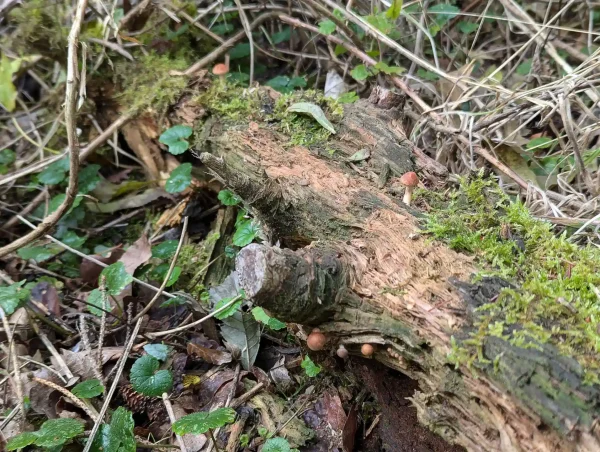
Strumpshaw Fen – 6th October 2024
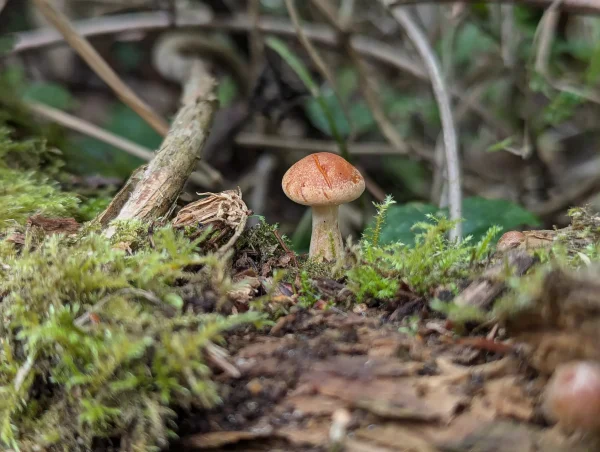
Strumpshaw Fen – 6th October 2024
In the Zen Zone more unidentified mushrooms on a stick…
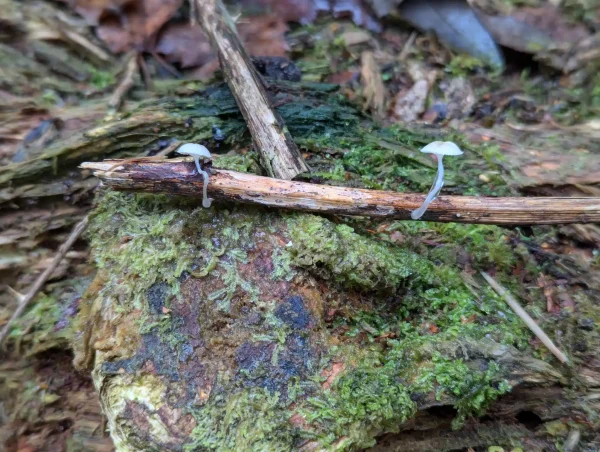
Strumpshaw Fen – 6th October 2024
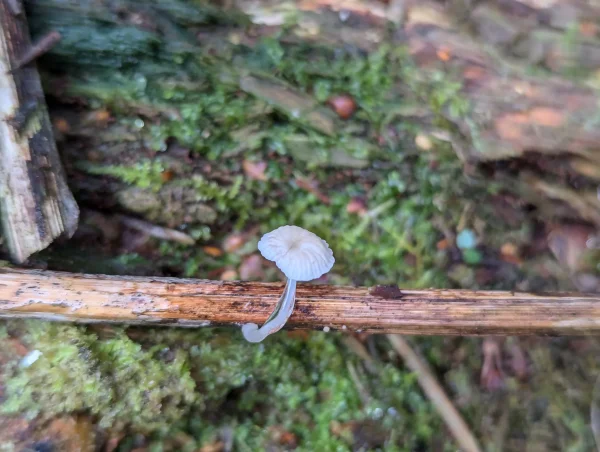
Strumpshaw Fen – 6th October 2024
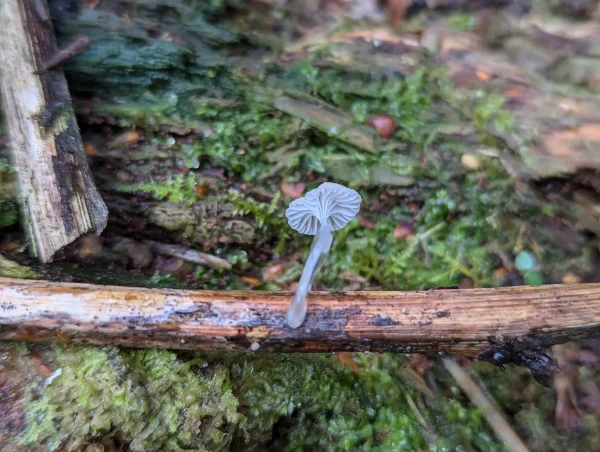
Strumpshaw Fen – 6th October 2024
and fragment of wood.
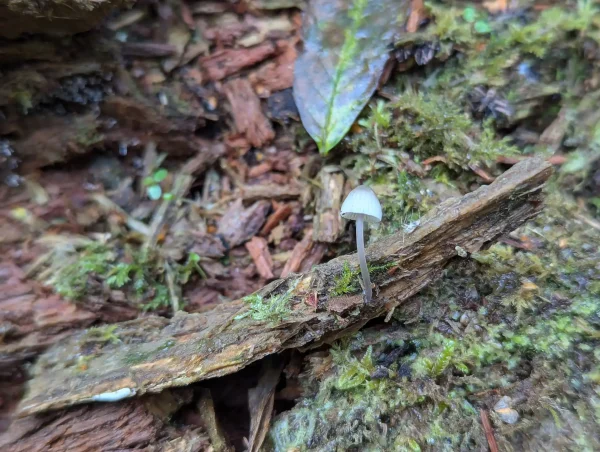
Strumpshaw Fen – 6th October 2024
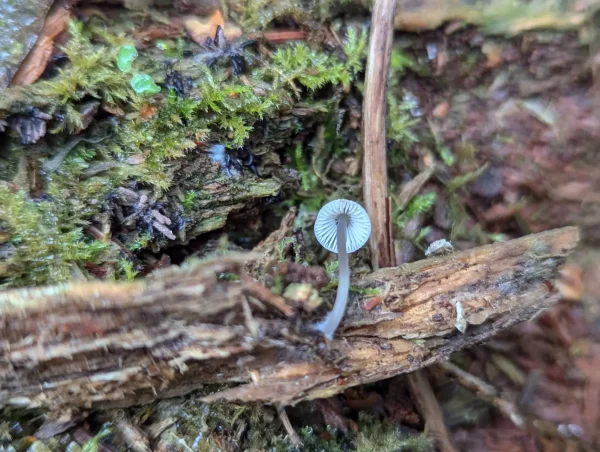
Strumpshaw Fen – 6th October 2024
At Basecamp we saw more of what we believe to be Artomyces pyxidatus. We saw this fungus in the summer on the same log.
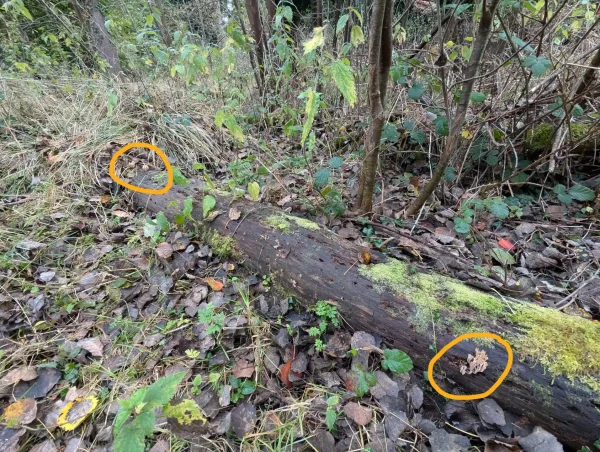
Strumpshaw Fen – 6th October 2024
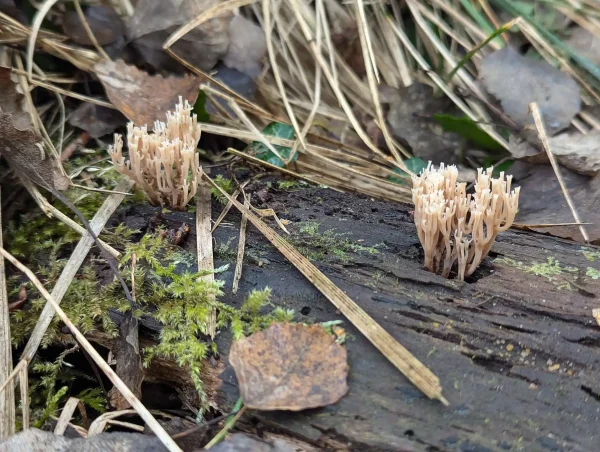
Strumpshaw Fen – 6th October 2024
These specimens definitely appear to have the key distinguishing feature of A. pyxidatus — the crown-like tips on the branches of the fungus.
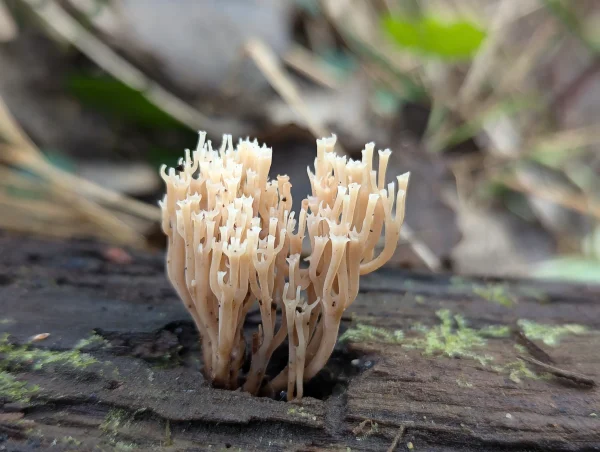
Strumpshaw Fen – 6th October 2024

Strumpshaw Fen – 6th October 2024
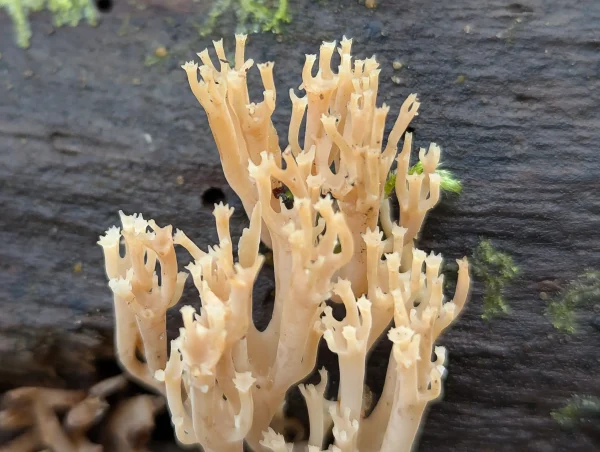
Strumpshaw Fen – 6th October 2024
Using Google Lens and Mycokey’s AI identifier, and cross-referencing with resources like First Nature, the mushrooms below that we spotted at The Dell are likely Galerina marginata, commonly known as the Funeral Bell. This species is deadly poisonous.
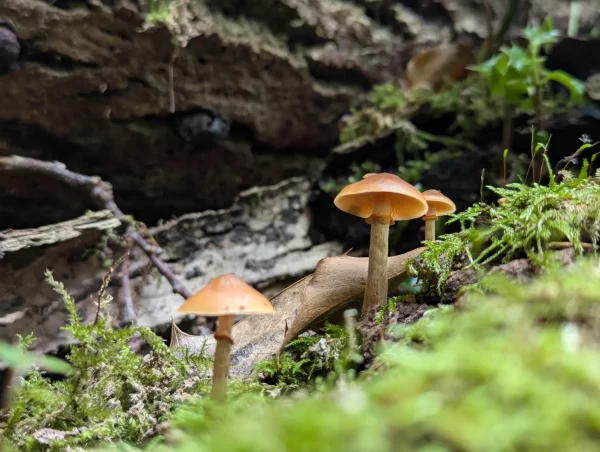
Strumpshaw Fen – 6th October 2024
Also in The Dell, something that I’d normally ignore because I’d never be able to ID it — but I wondered if it might be a slime mould. After some online investigating, I’m thinking maybe it’s a teleomorph (fruiting body) of Trichoderma paraviridescens. [1]
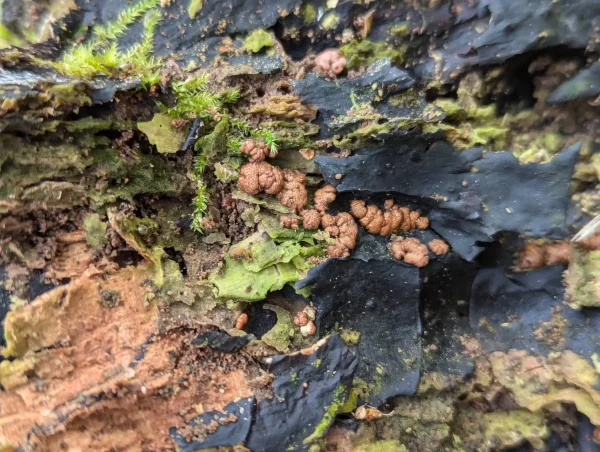
The Dell – Strumpshaw Fen – 6th October 2024
On the way to the Gnarly Oak some sub-millimetre white furry growths with translucent orange-brown droplets which remind me of woolly woodwart (Lasiosphaeria ovina) which we saw in the same area earlier in the year.

Strumpshaw Fen – 6th October 2024
And some probable Hypholoma fasciculare (Sulphur Tuft).
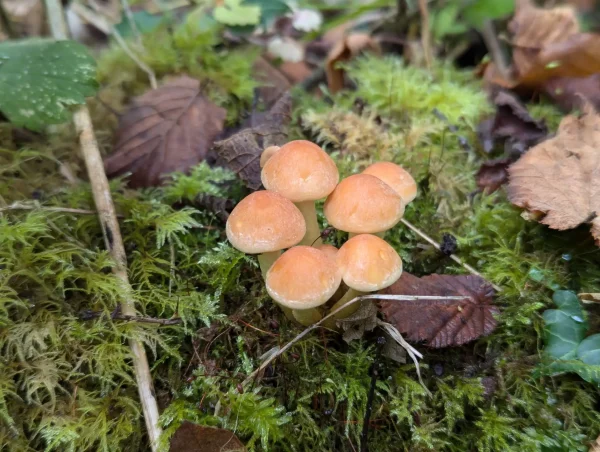
Strumpshaw Fen – 6th October 2024
I was drawn to the bulbous base of the stem of the mushroom below.
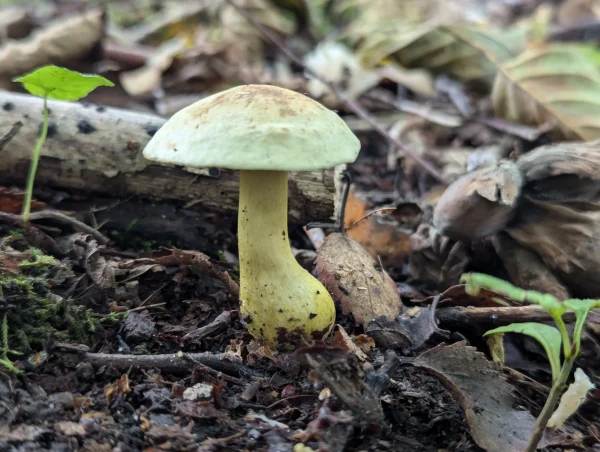
Strumpshaw Fen – 6th October 2024
At the end of the drainage channel path, after The Gnarly Oak and before The Outpost, an unidentified clay-pink mushroom growing from a small branch.
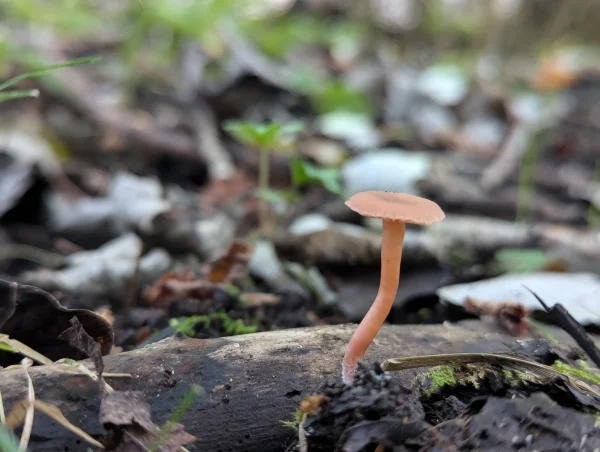
Strumpshaw Fen – 6th October 2024
Near The Outpost we noticed some bright red from afar which turned out to be two Pluteus aurantiorugosus (Flame Shield) mushrooms emerging from the same tree wound where we spotted P. aurantiorugosus last year during my daughter’s survey of the woodland at Strumpshaw Fen.

Strumpshaw Fen – 6th October 2024
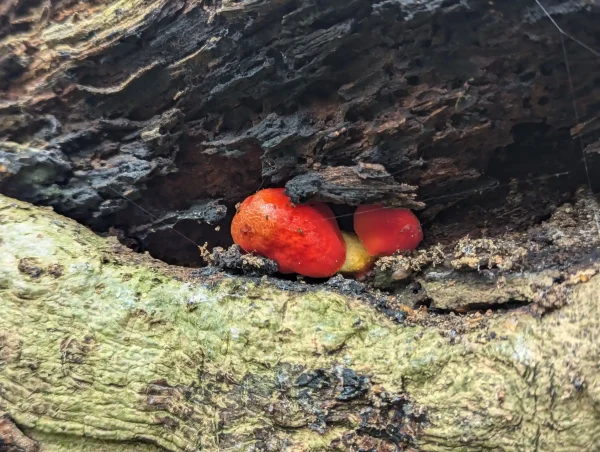
Strumpshaw Fen – 6th October 2024
After The Outpost, in the same windthrown root hollow where found Stemonitopsis typhina, we saw gregarious groups of what may have been Trichia species sporangia and what appeared to be old S. typhina.
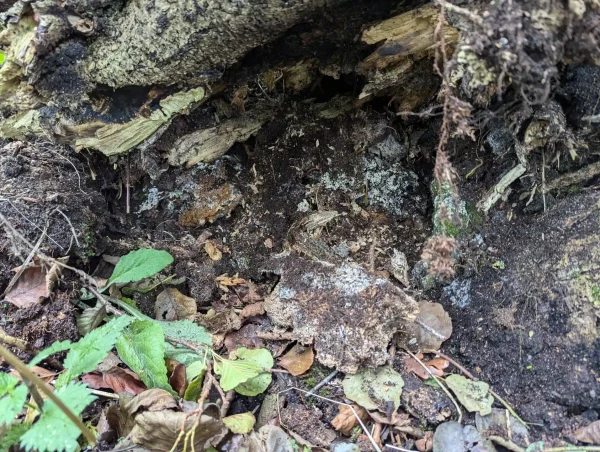
See more about these slime moulds.
Further along the Woodland Trail, after The Outpost, we spotted these slender and delicate Mycena-like mushrooms.
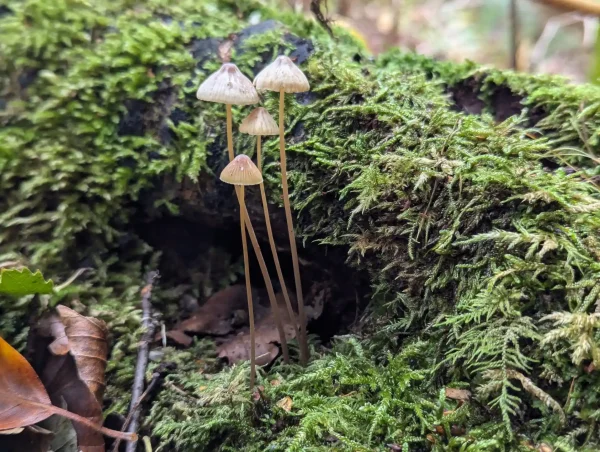
Strumpshaw Fen – 6th October 2024
In the summer, we have saw the slime mould Stemonitis flavogenita on this degrading trunk (below) — this visit we saw some other-worldly Phlebia tremellosa (jelly rot).
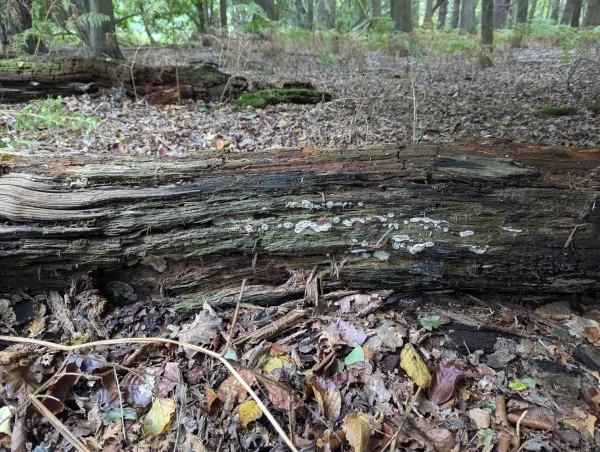
Strumpshaw Fen – 6th October 2024
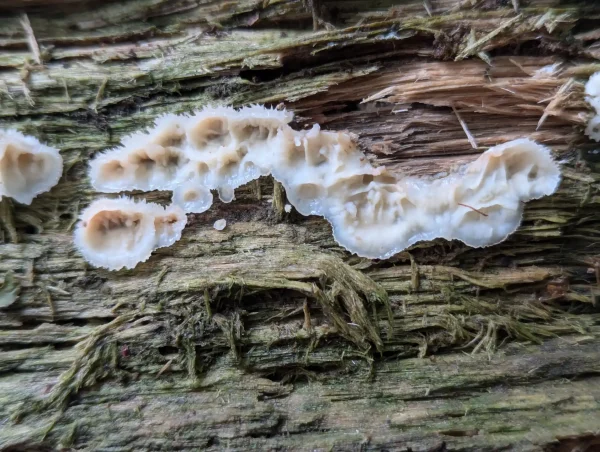
Strumpshaw Fen – 6th October 2024
20th October
Just before Basecamp I came across some Cortinarius in the same spot that my daughter saw in her 2022 and 2023 surveys of the reserve woodland
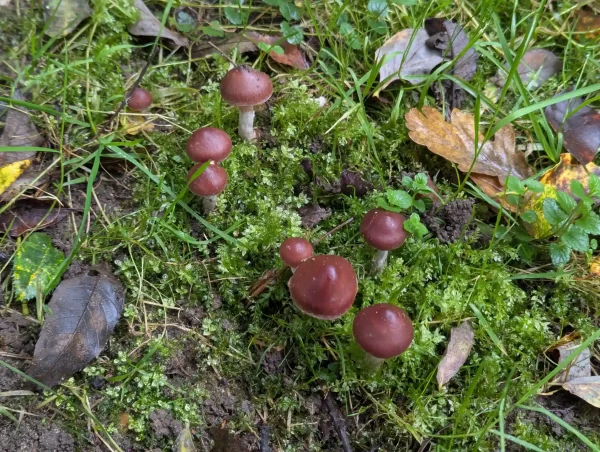
Strumpshaw Fen – 20th October 2024
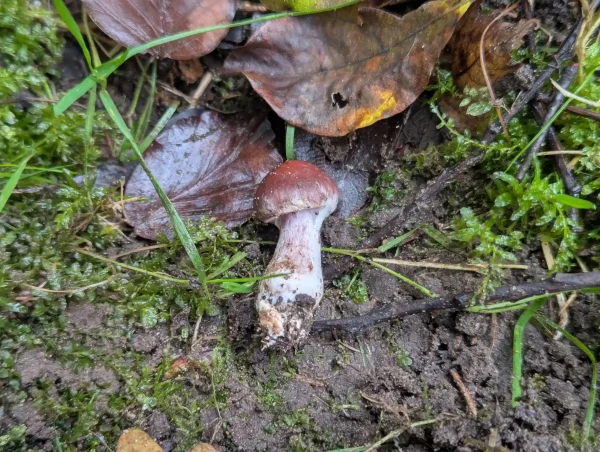
Strumpshaw Fen – 20th October 2024
And on a log that we have often seen slime moulds, a Tubifera ferruginosa.
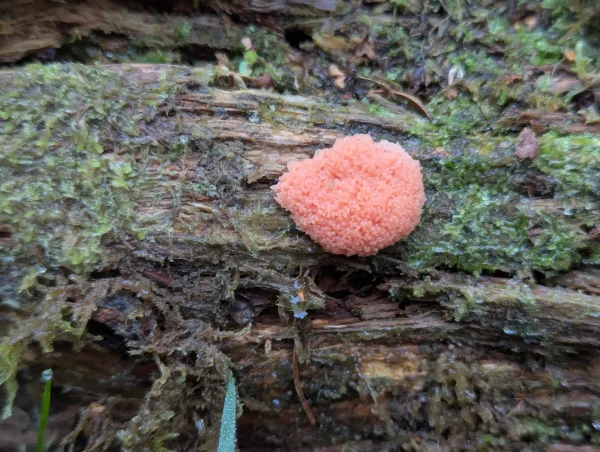
Strumpshaw Fen – 20th October 2024
At The Dell we noticed some peculiar white, spikey hair-like growth on a few nettle stems. Google Lens suggested the woolly aphid but it’s clearly not that — when I tapped a stem a puff of white, powdery substance, possibly spores, was released.
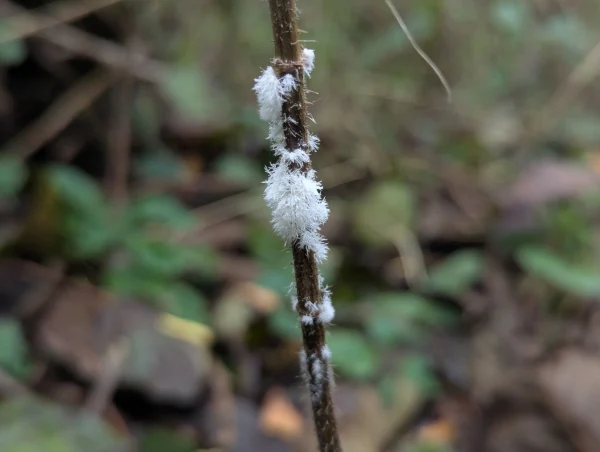
Strumpshaw Fen – 20th October 2024
Unidentified mushrooms and Xylaria hypoxylon.
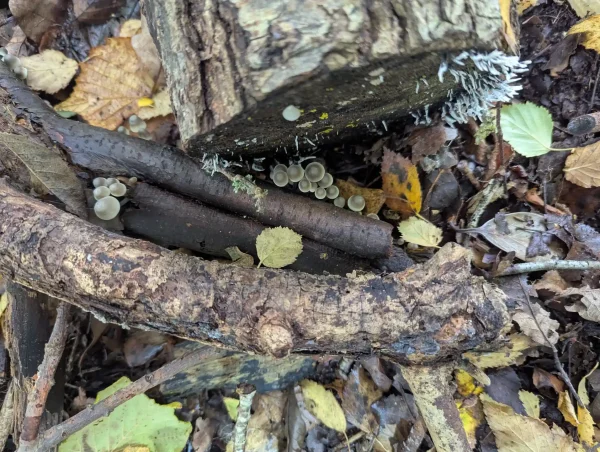
Strumpshaw Fen – 20th October 2024
More unidentified mushrooms in the following photos.
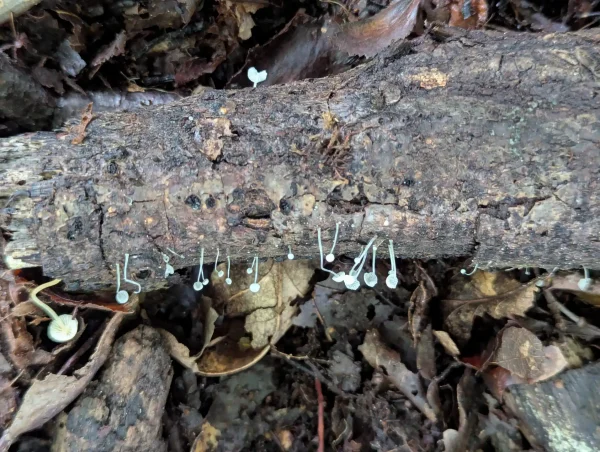
Strumpshaw Fen – 20th October 2024
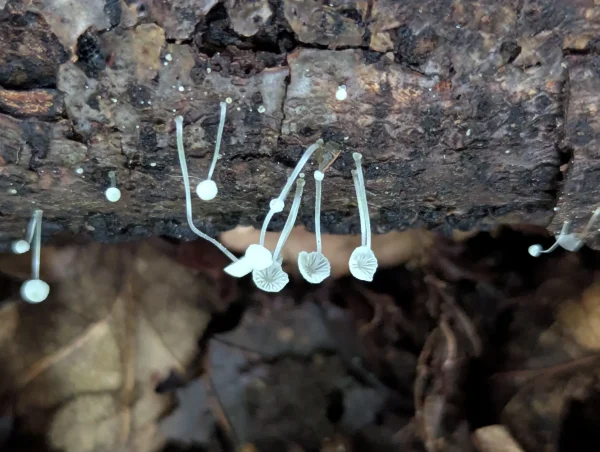
Strumpshaw Fen – 20th October 2024
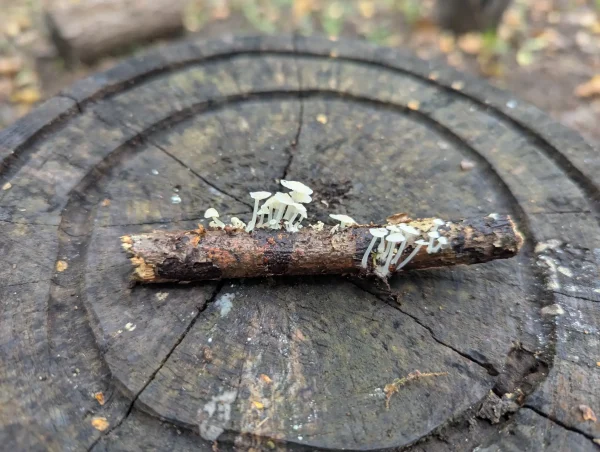
Strumpshaw Fen – 20th October 2024
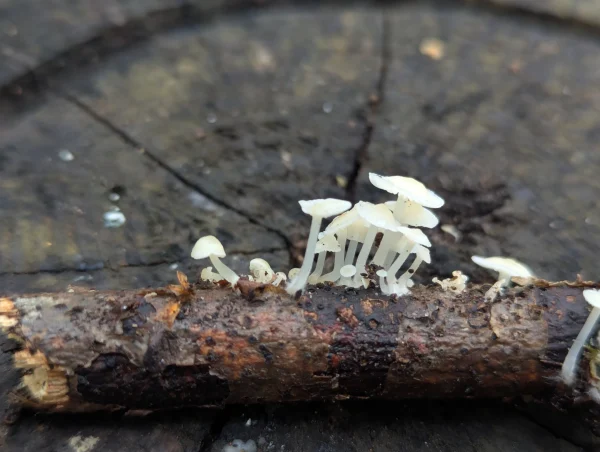
Strumpshaw Fen – 20th October 2024
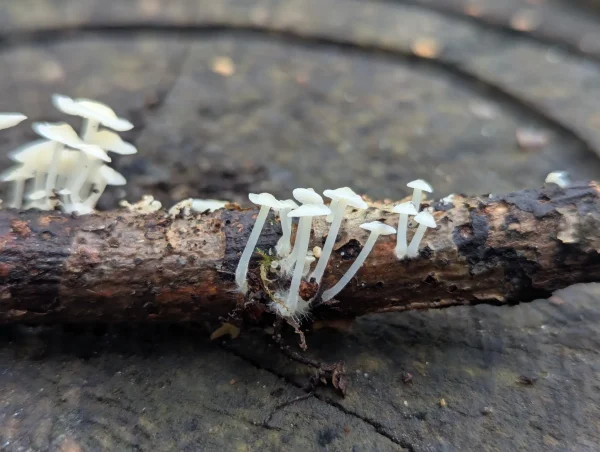
Strumpshaw Fen – 20th October 2024
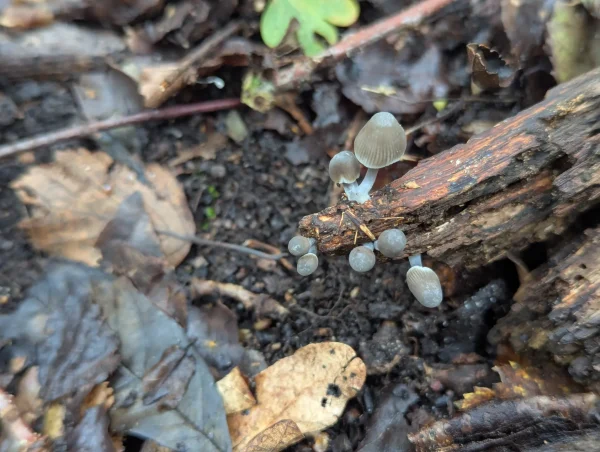
Strumpshaw Fen – 20th October 2024
Opposite The Outpost, a stump and it’s fallen trunk were being colonised by the slime mould Ceratiomyxa fruticulosa.
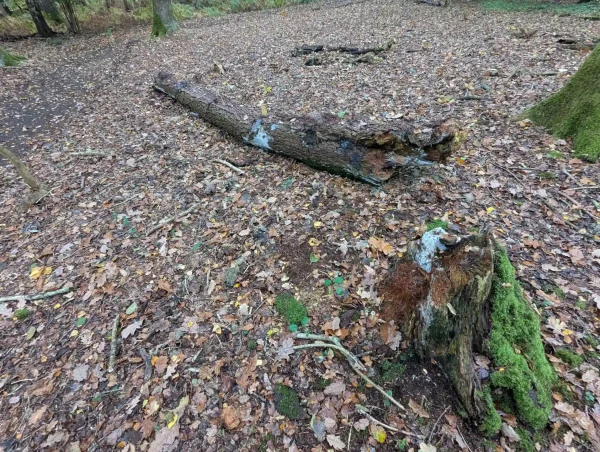
Strumpshaw Fen – 20th October 2024
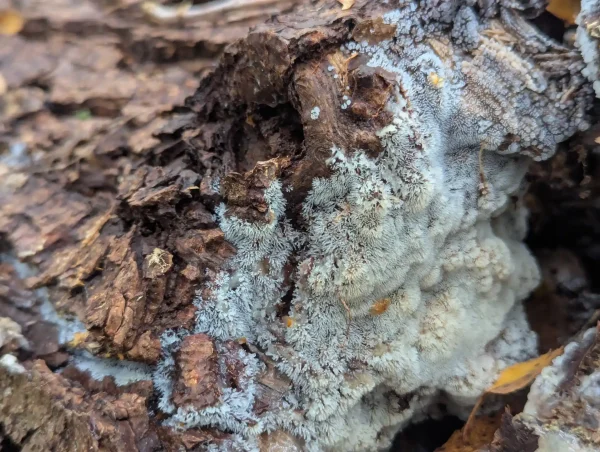
Strumpshaw Fen – 20th October 2024
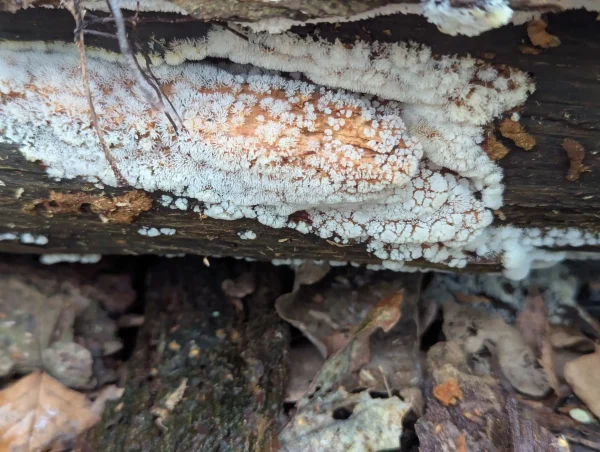
Strumpshaw Fen – 20th October 2024
After The Outpost, a lovely line of white, unidentified young slime mould sporangia
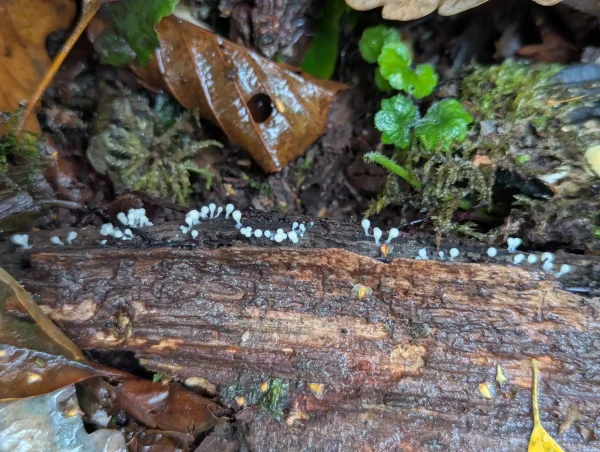
Strumpshaw Fen – 20th October 2024
27th October
Just before the reserve carpark, at the junction with Tinkers’ Lane we spotted some Coprinus comatus (the shaggy inkcap) which we often see at this spot.
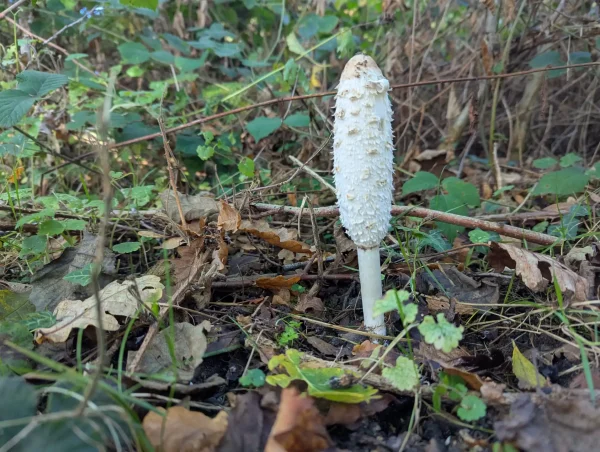
Strumpshaw Fen – 27th October 2024
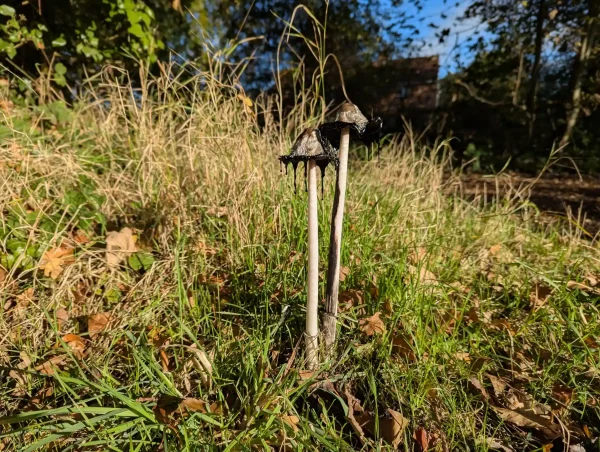
Strumpshaw Fen – 27th October 2024
At Basecamp, on the end of a small log supporting one of the log benches, some Auricularia auricula (jelly ear) [2] and what looks like it could be Trentepohlia aurea – which I saw in the summer scrambling up Nether Red Brook in the Peak District.
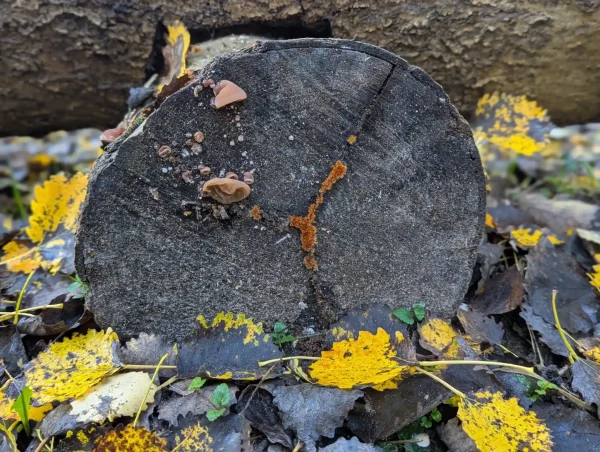
Basecamp – Strumpshaw Fen – 27th October 2024
Trentepohlia aurea is a green algae and the orange colouration is a result of carotenoid pigments within the algal cells. BUT maybe it’s the ozonium form 😱 of the fungus Coprinellus domesticus – the firerug inkcap [3][4].
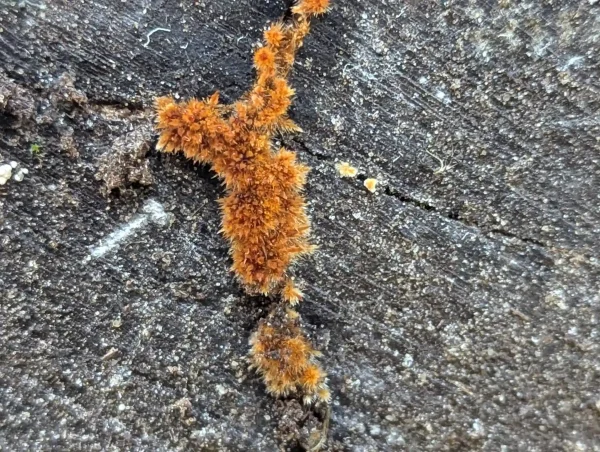
Basecamp – Strumpshaw Fen – 27th October 2024
In the photo below maybe a Trichia or Hemitrichia slime mould.
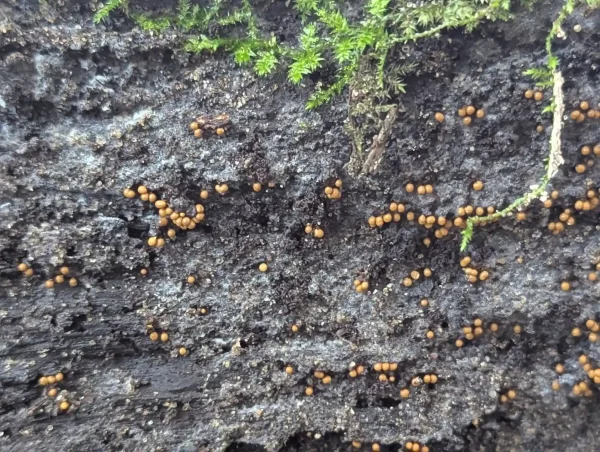
Strumpshaw Fen – 27th October 2024
The always exquisite Stemonitis slime mould.
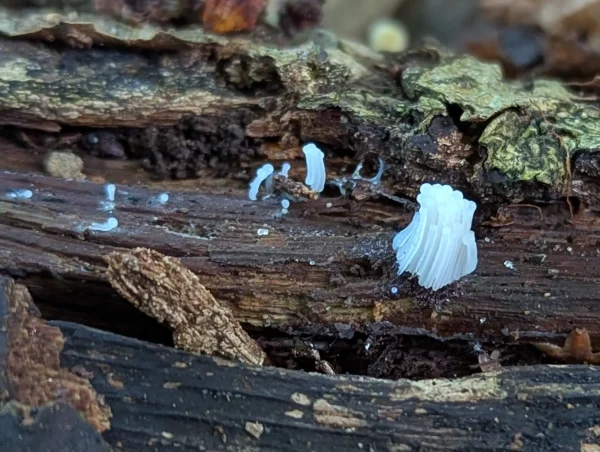
Strumpshaw Fen – 27th October 2024
Along the drainage channel path, after The Gnarly Oak, an unidentified fungus that almost looks like a fried egg!
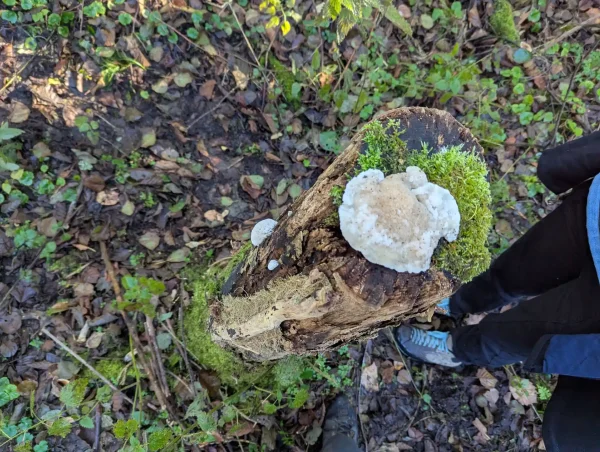
Strumpshaw Fen – 27th October 2024
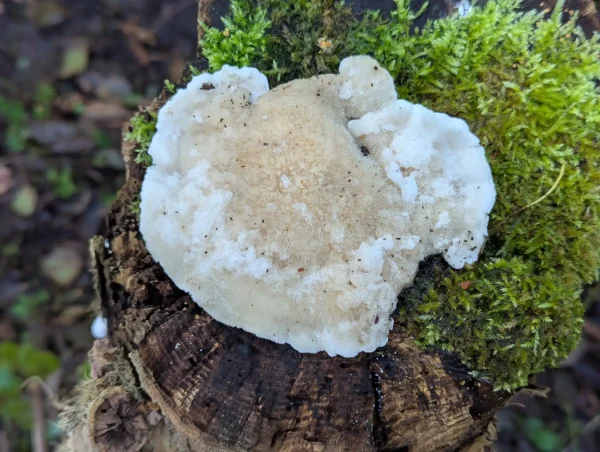
Strumpshaw Fen – 27th October 2024
Further down on the trunk (as seen in the first photo above) most likely the same fungus fruiting as a bracket.
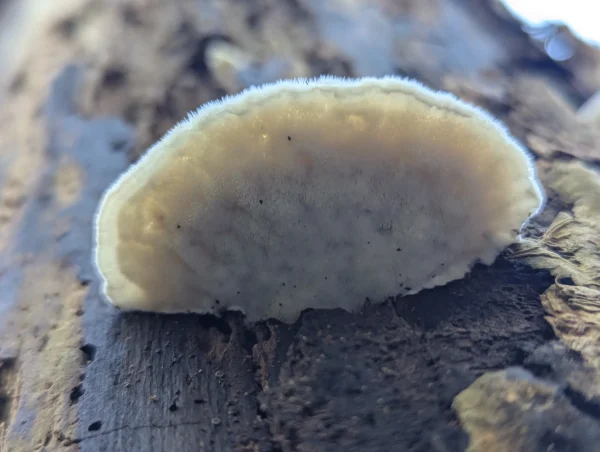
Strumpshaw Fen – 27th October 2024
At the end of the drainage channel path we spotted a Coprinopsis lagopus – the Hare’sfoot Inkcap!
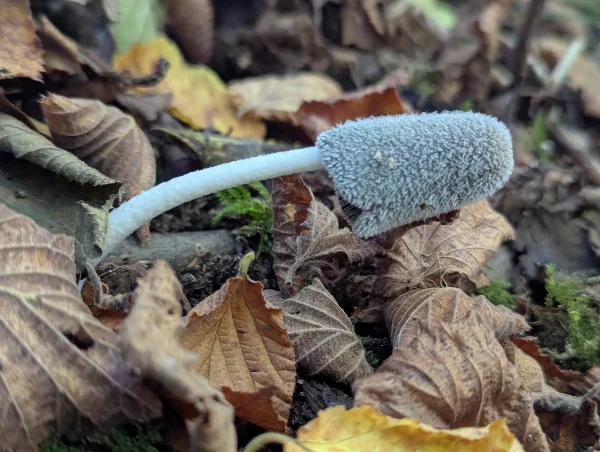
Strumpshaw Fen – 27th October 2024
In the same area a strange white growth on a fallen leaf.
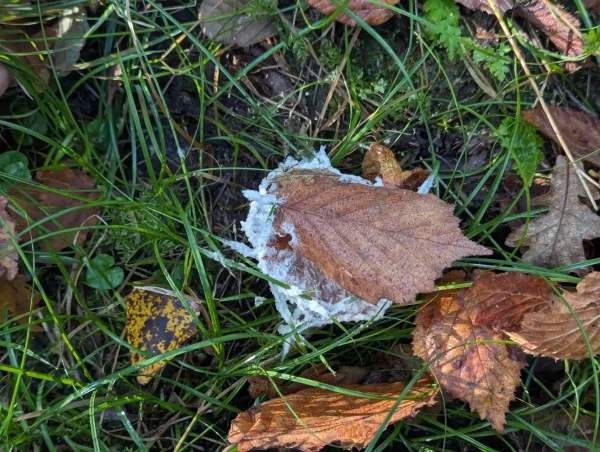
Strumpshaw Fen – 27th October 2024
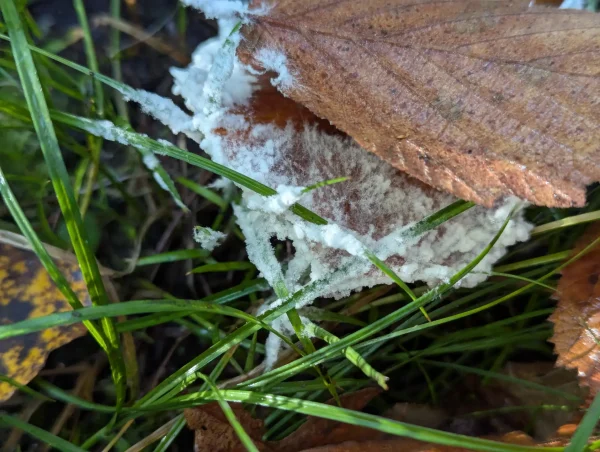
Strumpshaw Fen – 27th October 2024
And near The Outpost, on the same tree that we spotted Pholiota squarrosa (the shaggy scalycap) during my daughter’s survey in November 2023, we encountered this mushroom again.
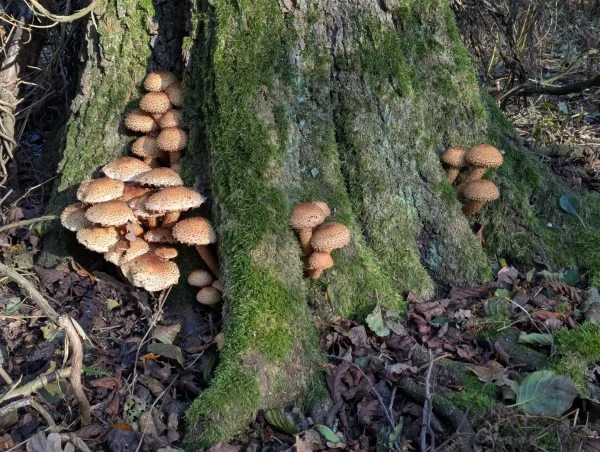
Strumpshaw Fen – 27th October 2024
[1] Photos of Trichoderma paraviridescens at iNaturalist
[2] Paper proposing that Auricularia auricula-judae be returned to the original epithet designated by Linnaeus – creating the binomial Auricularia auricula.